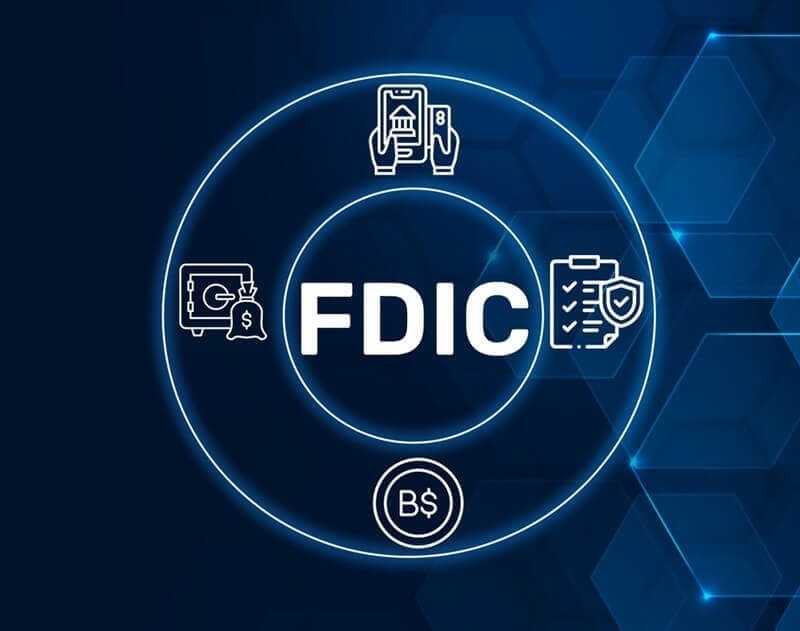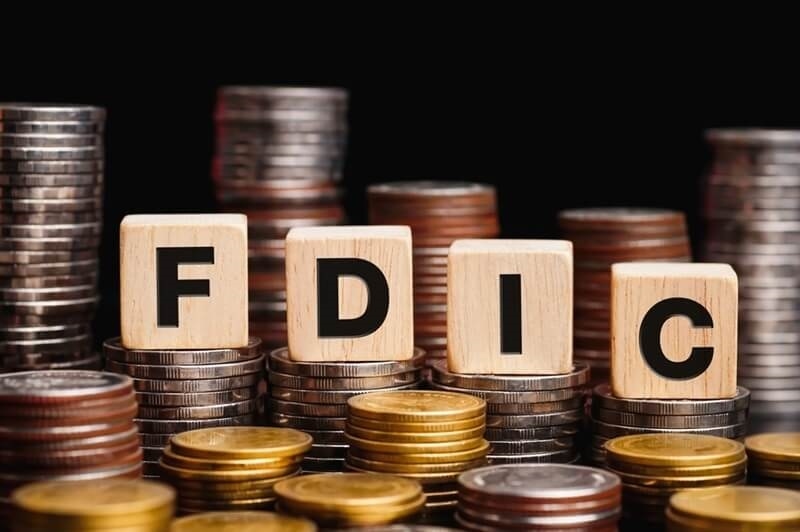
In uncertain economic times, there’s one question many savers and account holders often ask: Is my money safe in banks? Whether you’re stashing away emergency funds, building savings, or simply managing your monthly expenses, ensuring that your deposits are secure is critical. That’s where FDIC insurance comes in—a financial safety net that many people rely on but don’t fully understand.
Let us talk about what FDIC insurance is, why you need it, how much it insures, FDIC coverage limit, and about insured and uninsured accounts so that your money is secure.
FDIC, or the Federal Deposit Insurance Corporation, is a federal government agency that came into being during the Great Depression in 1933. Its major purpose is to insure depositors against bank failure. But what exactly is FDIC insurance?
FDIC insurance is a U.S. government protection that covers your bank deposits up to a given amount. If your FDIC-insured bank goes under because it has financial difficulties, your money—up to a given amount—is refunded. You have it automatically covered when you make deposits into most typical accounts in FDIC-member banks.
Compared to investments, deposits in banks cannot be risky. That is why this insurance is extremely valuable. It ensures your money will be protected and accessible even in the case of a banking crisis.

Most people these days wonder, sometimes rightfully so, Is my money secure in banks? The brief response is yes—if your bank is FDIC-insured and your deposits fall within the range covered by the FDIC.
The US banking system is protected by measures to secure depositors, although banks are not regulated equally. Your money is secure if it's in an institution insured by the FDIC and in a qualified deposit account, even during bank failure.
This insurance does not cover all financial products, nor does it cover loss of investments. Knowing where and how your money is held makes a huge difference in having your money protected. That is why it is so important to know how FDIC protects depositors and what is covered under it.
So how is your deposit insured by the FDIC?
In addition to protecting people, this system stabilizes the overall financial market. When people ask, Is my money safe in banks?, the FDIC's hundreds of years of history of rapid action helps provide a positive answer.
The amount covered by the FDIC is $250,000 per depositor, per insured bank, per ownership category. That sounds complicated, but it's logically based on a few typical situations.
If you have both a checking account and a savings account in your own name in the same bank, and both of them contain less than $250,000 in balance, your combined fund is insured. If you have a joint account with someone else, you and the other party both get insurance for up to $250,000, so the total covered jointly is $500,000.
Now, assume you have $400,000 deposits in a single bank in your name. Then, only $250,000 is FDIC-insured, and $150,000 is not. That is the reason you must be mindful of the FDIC coverage limit when budgeting your finances.
To diversify huge sums, most individuals diversify their funds in many banks or use alternative types of ownership like trust or retirement accounts. This helps them keep within the insured amount and attain liquidity.
One of the myths surrounding people is that everybody's bank accounts are insured. That's not even close to correct. In order to understand what is FDIC insurance, you have to understand the very key distinction between insured and uninsured accounts.
Standard insured accounts are:
These are standard deposit products that are offered by FDIC-insured banks and are included in the coverage amount.
But not everything you buy at a bank is insured. Here are some examples of uninsured accounts or products:
Even if you bought these products at a bank, they're not FDIC-insured. That's because there's investment risk involved, and the FDIC doesn't insure against that. The difference between insured vs uninsured accounts helps avoid unnecessary financial risk.
With financial products changing and more individuals looking for alternative means such as internet banks, fintech companies, and digital money, the position of FDIC insurance is still as vital today as it has ever been.
Most individuals inquire, Is my money safe in banks, when they hear or learn about banking instability from the headlines. The response is solely based on the method through which your accounts are held and if your bank is a participant of the FDIC.
FDIC insurance continues to be the foundation of confidence in traditional banking. It gives you the assurance to put your funds into banks and other institutions with no fear of losing all of it. It encourages savings and allows people to organize their own or their company's finances accordingly.
As enticing as enormous investment gains can be, there is nothing quite so same of safe certainty as a deposit backed by a federal government bank. Recognizing how FDIC covers depositors merely makes the case for keeping some money in safe, covered vehicles all the more persuasive.
In case your total deposits are more than the FDIC protection, you can set things so that you avoid risking money.
It's just a matter of reviewing your account arrangements from time to time. This way, you have access to the best of the complete protection that exists, and your savings plan is also in accordance with your own financial goals.
People do not often think about what is FDIC insurance until something goes wrong. But knowing and using it correctly provides a strong financial planning foundation.
Whether you're a student saving for tuition funds, a business owner with payroll funds in your account, or a retiree safeguarding a nest egg, FDIC insurance gives you an assured way of keeping your money safe. With the knowledge that your covered deposits are insured in case of bank failure, you can focus on the other aspects of life.
It is also a reminder that safety is not guaranteed unless you know the system. Asking yourself the right questions—e.g., "Is my money safe in banks?" "Is my account within the FDIC coverage limit?" "Am I using only insured accounts?"—will allow you to make wiser financial choices.
In the economy of today, being financially literate is more important than ever. What is FDIC insurance? It gives you a basic tool for building a solid financial future. You now know that the FDIC automatically insures eligible accounts up to $250,000 for each depositor, for each bank, and for each ownership category. You recognize the importance of checking your accounts against the amount covered by the FDIC, and you recognize the easy differences between insured and uninsured accounts.
Most importantly, you now understand how depositors are protected by FDIC—by paying out or shifting accounts promptly in the worst possible bank failure situation. The next time someone frets and asks, Is my money safe in banks? You can advise them exactly what to say—and you'll have already protected your own savings.
This content was created by AI